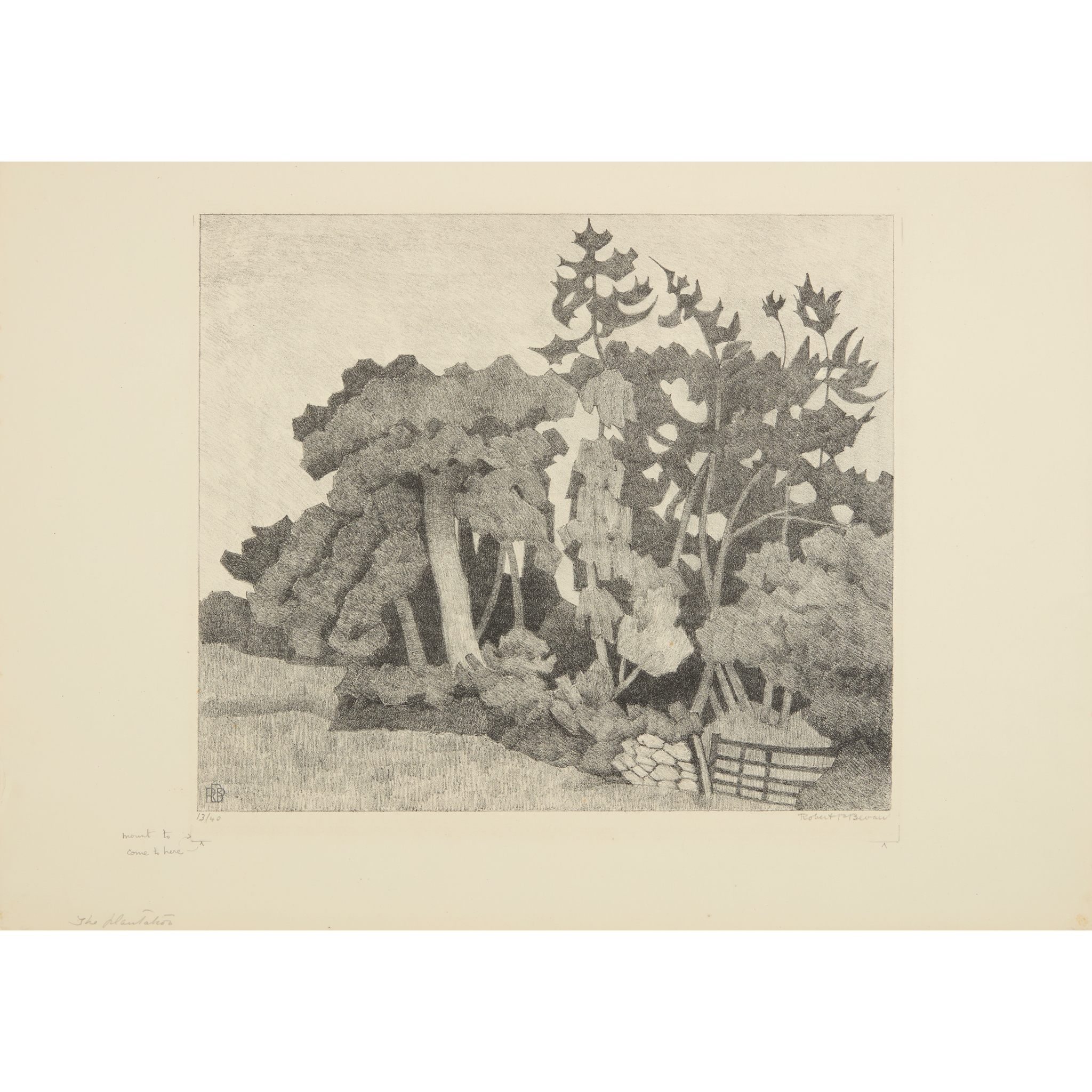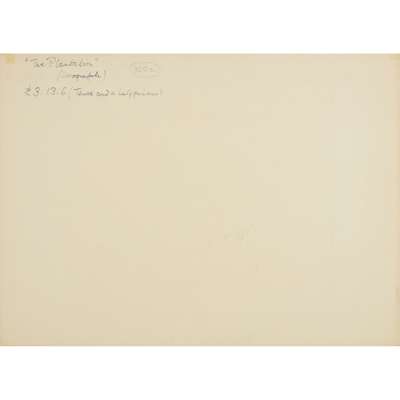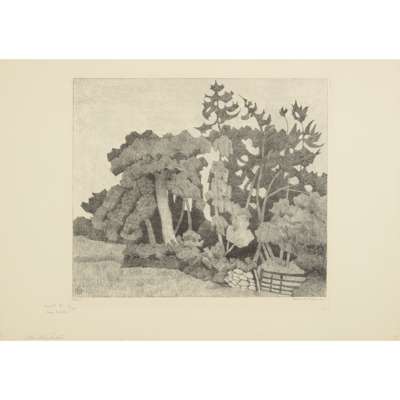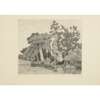
Lot 44

ROBERT POLHILL BEVAN (BRITISH 1865-1925)
THE PLANTATION - 1922






Auction: 26 March 2025 from 10:00 GMT
Description
Lithograph, 13/40, signed and numbered in pencil to margin, with the stamped monogram, inscribed with title in pencil at lower edge
Dimensions
the sheet 41cm x 56cm (16.25in x 22in), unframed
Provenance
Estate of the Artist;
and thence by descent to the present owner.
Footnote
Literature: Dry, Graham, Robert Bevan 1865-1925: Catalogue Raisonné of the Lithographs and other Prints, The Curwen Press, London 1965, another example from the edition repr. b/w no.37.
Note: This work is based, in reverse, on an oil painting of the same title of 1919, the location of which is unknown.
‘Lithography was a very important part of his artistic expression. He found it a very suitable medium for his skills . . . At all times he loved the feel of lithographic chalk and the handling of it on the smooth stone’ - Robert Alexander Bevan, the artist’s son, 1968
We are delighted to present a group of eight lithographs by Robert Polhill Bevan, which come from the Artist’s Estate and thence by descent to the present owner, in our Prints & Multiples sale of 26 March 2025. Consisting of four of his celebrated London horse images and four of his attractive rural scenes, each reveals his love of and technical brilliance in the medium of lithography.
Bevan was born in Hove, Sussex in 1865 and grew up in Horsgate, near Cuckfield. He studied at Westminster School of Art, London and at the Académie Julian in Paris. His training during the 1890s also included two periods in Pont-Aven in Brittany – where he met Paul Gauguin – as well as time spent in Madrid and Tangier. He was a member of the Fitzroy Street, Camden Town, London and Cumberland Market Groups, founded in London between 1907 and 1914. In 1897, Bevan met and married the Polish artist Stanislawa de Karlowska (1876-1952). Three years later they moved to 14 Adamson Road, London, which remained their base for the rest of Bevan’s life. The couple became key figures in London’s art world before and after the First World War and held popular ‘at homes’ on Sunday afternoons during the 1910s.
Printmaking was an important part of Bevan’s artistic practice. He used lithography early in his career but turned away from the medium in 1901. After 17 years Bevan returned to lithography with aplomb at the end of the War. A work like The Plantation, 1922 (lot 44), shows his mature mastery of the technique, along with a simplification of form, angular structure and clarity of composition. He brought this sensibility to all his landscape prints, capturing the essence of English villages and Polish homesteads in images including The White House, 1921 (lot 43), A Polish Homestead, 1922 (lot 42) and Smithy Barn, Bolham, 1919 (lot 41).
Bevan was a highly-skilled horseman and his images of horses are amongst the most celebrated of his oeuvre. He would sketch during the horse sales in London, where he enjoyed the interaction between people and animals as much as the pace and spectacle of the event. This interest expanded into his printmaking practice and can be seen in lithographs such as Horse Dealers (Ward’s Repository No.1) (lot 38), The Horse Mart (Barbican No. 1) (lot 37) and Horse Dealers at the Barbican (Barbican No.2) (lot 39) produced from 1919 to 1921. Crocks of 1925 (lot 40) was his final lithograph and shows a pair of horses having been taken out of a cab’s shafts and led to a trough for a drink.
Following Bevan’s death in 1925, memorial exhibitions of his work were held at the Goupil Gallery in London and at Brighton Art Gallery. Bevan is represented in many major public collections, including the British Museum, Victoria & Albert Museum and Ashmolean Museum, Oxford.






